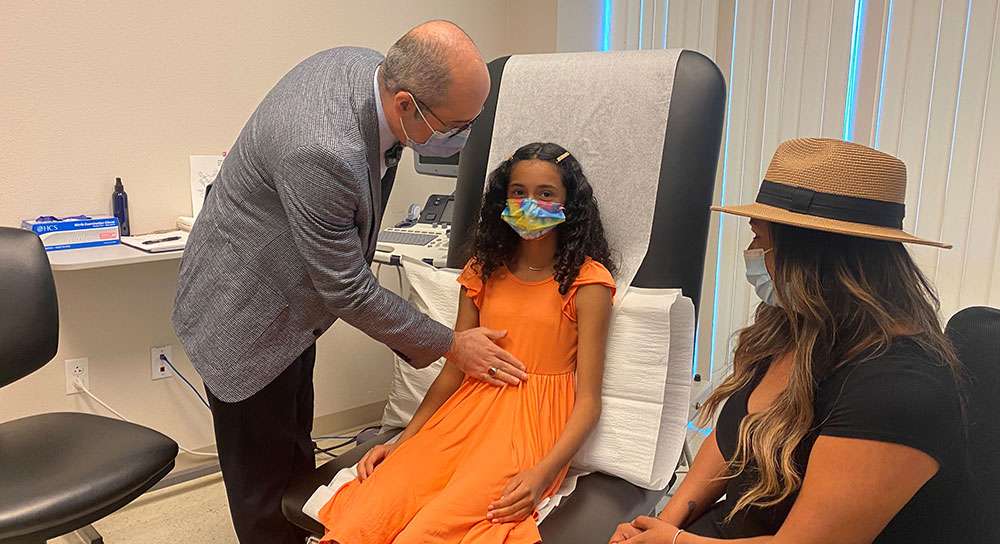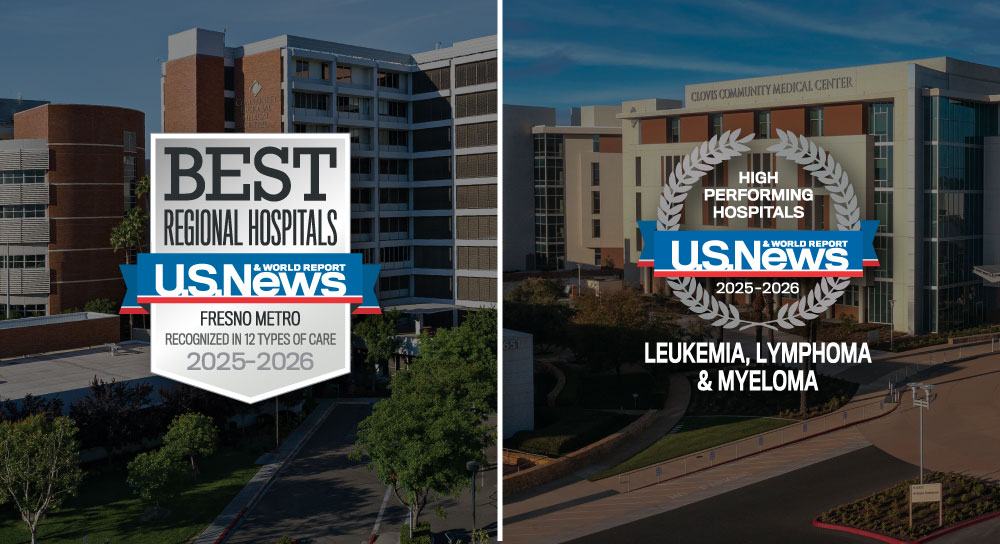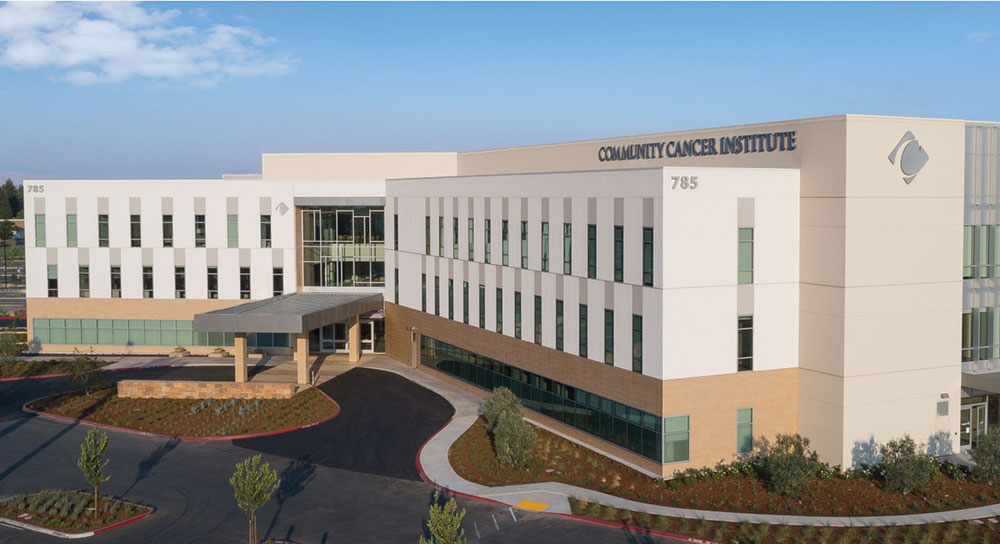As long as she can remember, 11-year-old Jennavieve “Jenna” Garcia has had stomach pains, often after she ate. Starting in kindergarten, the school nurse frequently called Jenna's mom because she was hurting.
Jenna’s mother took her to doctors and occasionally the emergency department looking for answers. Doctors told her mother Jessica Luna that it was nothing serious — maybe just constipation or stress. So they tried adjusting her diet.
“She was gluten free. She was lactose intolerant,” Luna recounts their 6-year search for something that would relieve the pains. “We were literally changing her diet all the time … It got to the point where she was just eating rice and oatmeal.”
The Christmas Eve night Jenna spent curled up in a fetal position on the bathroom floor prompted another ER visit near their Turlock home, and another sonogram. This time the sonographer found a mass, but a follow-up CT scan showed nothing, says Luna. They were advised to go home.
Luna woke up a few hours after the ER visit to find several missed calls from the hospital asking her to bring Jenna back.
“I had I can’t remember how many missed calls,” she says. “… Three other radiologists took a look at the CT scan and they found the mass. It had been drilled into my head (by past doctors) that there’s ‘nothing there.’ But they (the radiologists) were reading that there was something wrong with my baby and it was not just about her calling for attention or not being strong enough when stomach pains were coming on.”
Children rarely get this kind of tumor
More scans at another hospital showed a definite nearly baseball-sized mass, later diagnosed as a “solid pseudopapillary,” pressing against her liver and pancreatic ducts. It’s a rare type of pancreatic tumor that’s slow-growing and not cancerous. But it requires removal in a complex surgery — a surgery that is seldom done on children.
Dr. Shannon Castle, a pediatric surgeon at Valley Children’s Hospital where Jenna was finally diagnosed with the solid pseudopapillary tumor, says she does all kinds of surgeries on children of all sizes — but not the kind Jenna would need.
“Pancreatic problems in children are often very different … Luckily, children don’t tend to get cancer in their pancreas,” Dr. Castle explains. “This is a procedure that I did in training, but it's not frequent that we need a Whipple procedure. Luckily, I knew Dr. Fathi. He’s a surgical oncologist, so he does this procedure several times a month.”
Dr. Amir Fathi, director of Hepato-Pancreato-Biliary Surgery at Community Regional Medical Center, says he was shocked to get a call from a pediatric colleague. “Usually a surgeon who specializes in the liver and pancreas doesn’t get called by pediatric surgeons to operate on kids’ pancreases.”
Collaboration between hospitals and surgeons needed for complex Whipple case
The Whipple procedure is tricky. “Old-school surgeons used to call it the ‘Cadillac of surgery,’” explains Dr. Fathi, who trains UCSF Fresno medical residents in this technique as an assistant clinical professor. “It is one of the most complex operations that someone can do.”
A Whipple procedure involves removing part of the pancreas, a small part of the stomach, the gallbladder, the bile duct, and the first part of the small intestine — also known as the duodenum — to completely remove the tumor. Then the remaining pancreas is reconnected to the digestive system to restore digestive function.
“It’s very complicated and, overall, there’s a general rule in the surgery world that you don’t touch the pancreas. It’s a very temperamental organ,” Dr. Fathi adds.
The two surgeons agreed to do Jenna’s Whipple surgery at Community Regional where Dr. Fathi also has a team of surgical nurses experienced in the long, complex procedure.
“Putting this collaboration together was key,” says Dr. Fathi. “Having someone like me who is comfortable with the Whipple … teaming up with someone who operates on kids and knows how to deal with a pediatric patient. Kids are not little adults. They have their own anatomy, so I really needed the help of a pediatric surgeon.”
He adds, “This was a great example that as surgeons we can move beyond the red tape and push the envelope for the sake of patients.”
Dr. Castle agrees. “When it's the best thing for the children in the Valley, or for any person in the Valley, to have surgeons collaborate rather than having to send them away from their home, I think that it's an opportunity that we should take advantage of.”
Removing tumor eliminates pain and food fears
Jenna says before the surgery she could feel her tumor. “Just like a little ball right there,” she describes, pushing on a spot under her rib cage where she used to feel pain. “It was very tiny though.”
It took nearly seven hours to remove the pancreatic tumor, followed by a week in recovery at Community Regional. Luna says she would’ve taken her child across the country to find experts for this kind of surgery, but was happy to be able to stay close to their Turlock home.
“My big concern was, ‘Is my baby going to be okay?’ because this surgery is one that’s never really done on a child,” says Luna. “I mean, it took two doctors to get that tumor out. They’ve both been so amazing since the beginning.”
Jenna echoes her mom’s assessment of her two surgeons. “I was grateful that they worked on it and they finished the surgery and it was successful.”

Best of all, Jenna’s stomach distress is gone and she can eat nearly everything. “I just can’t have too much sugar,” she explains. “They took that tiny piece off (my pancreas) and that causes me to feel nauseous if I have a lot of sugar.”
Jenna’s first taste of solid food was ice cream in the hospital and then fried chicken. Luna says it makes her happy to see the change. “I notice that she’s eating better. She was always scared of eating before.”
Outlook is good for Jenna
Both surgeons predict Jenna to be free of the problems her pancreatic tumor once caused and they expect the tiny fifth grader will thrive as her nutrition improves.
“The Whipple procedure essentially re-does all the plumbing so it can be kind of an adjustment, but she’s been doing great and is back to eating things that she enjoys,” Dr. Castle says.
Dr. Fathi expects Jenna to need little follow-up. “The good thing is, in these type of tumors, if you're able to cut it out, that's all that's needed,” he explains. “You don't have to give them chemotherapy.”
Jenna shouldn’t have any more stomach trouble, Dr. Fathi says. “So Jenna is tumor free and a normal kid and is going to grow like a normal person. We just need to get more imaging in the future to make sure that nothing comes back.”






